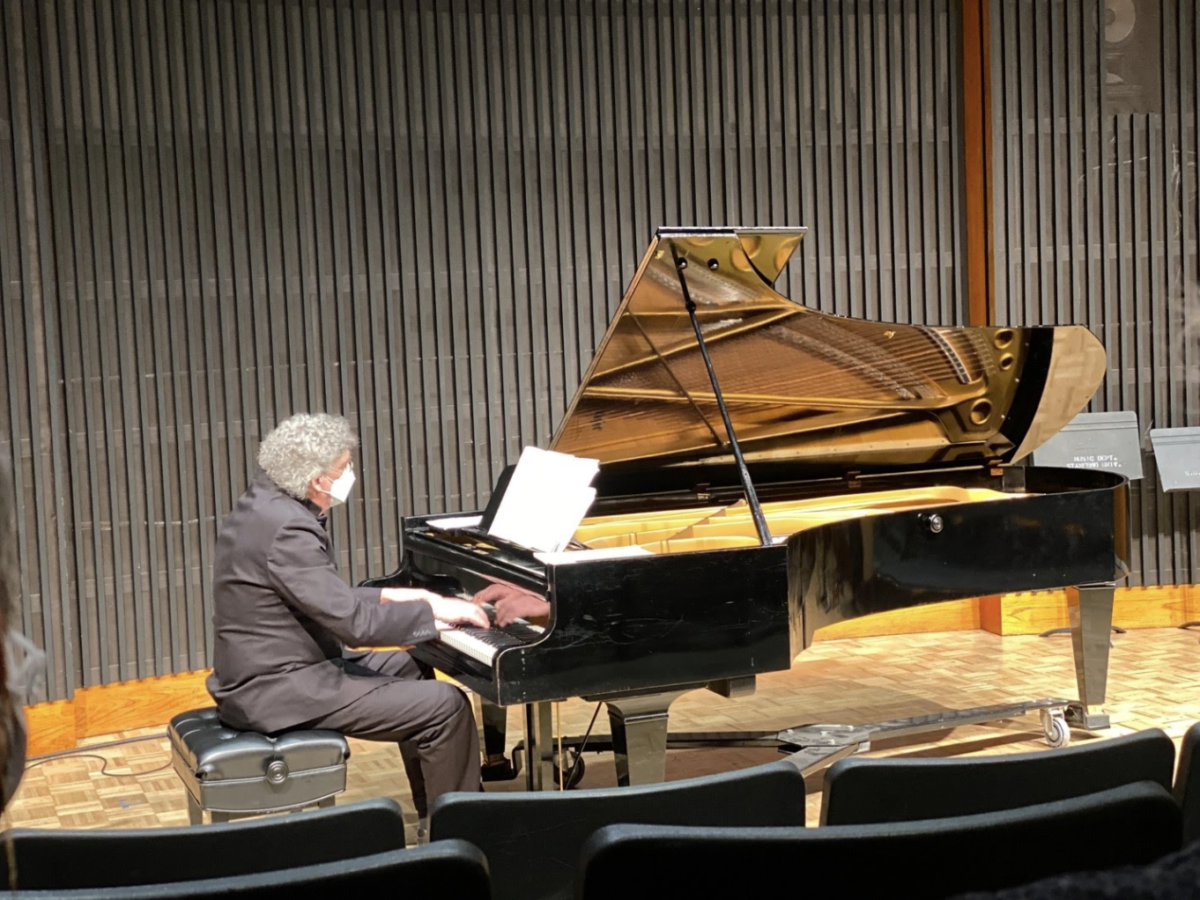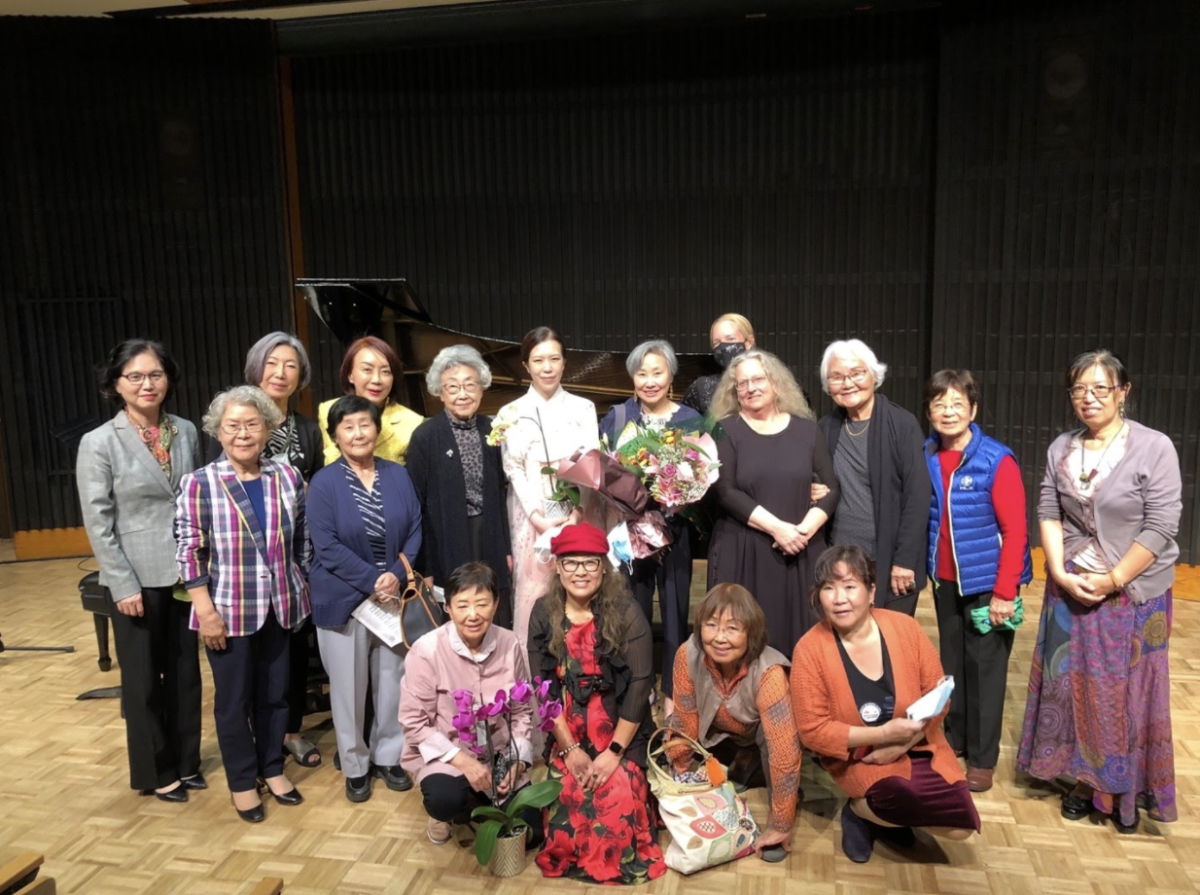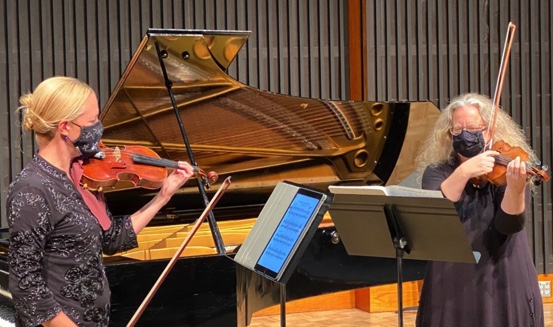Wooden Fish Ensemble’s performance on Sunday provided a unique look into American and East Asian contemporary classical music and the compositions that lie comfortably in between, expressing a message of unity and cultural dialogue.
The performance was hosted by the Department of Music in Campbell Recital Hall and featured the musical talents of Senior Music Lecturer Thomas Schultz on piano, Terrie Baune and Ilana Blumberg playing the violin and Hwayoung Shon playing the gayageum (a Korean string instrument). Some of the music performed was written by Schultz’s wife and Wooden Fish Ensemble composer, Hyo-shin Na. Since its founding in 2003, the Ensemble has featured musicians from the Bay Area and various guests from Asia. Schultz added, “Recently the music we play is more and more Asian.”
For this performance, the Ensemble invited Shon, a renowned gayageum performer with accolades longer than I can fit in this article, who arrived on stage in her hanbok, carrying the large wooden string instrument in one hand and its frame in another. During her performance of “Kayageum Sanjo,” the hall went silent, entranced by the simple beauty of the music. Rooted in Korean traditions, Shon’s performance accelerated over the course of the song, generating complex and beautiful transient harmonies that hung idly in the air.
The Wooden Fish Ensemble also excelled in showcasing modern interpretations of traditional hymns, such as the “North American Ballads” series composed by Frederic Rzewski. In “Which Side Are You On? (After Florence Reece),” Rzewski appropriated and built upon the well-known hymns that tell the stories of North American identities; this specific composition is based on Florence Reece’s 1931 composition about a miner’s strike in Kentucky.
In a dissertation interview with pianist Sujin Kim, Rzewski elaborated on the idea of deliberation behind his composition: “So, are you on this side? Or are you on that side? Are you supporting the miners? Or are you supporting the bosses?” In concert, Schultz captured this division perfectly; the composition was divided into an erratic, rapid chord progression that bordered on both mania and optimism, as if you were searching for meaning in an uncertain, morally ambiguous world.

At its best, however, the Wooden Fish Ensemble stood out for the freshness and inventiveness of Na’s composition, complimented with an emotive execution by the wonderful Blumberg and Baune. In “The Sway of the Branch II (for two violins)” (2017) and “Weaving Variations (after Victor Jara’s “Angelita Huenuman”)” (2020), the innovative implementation of plucking and gliding commands a sense of movement. Na’s composition creatively captured the feeling of a wind whistling through the leaves, as well as the musical negotiation between traditional Eastern and Western music composition.
“At first I used to make arrangements; assigning the music for each performer,” Na said, explaining her diverse composition skill set. “As we began to go on, I stayed out. I would just cook their snacks and they would teach each other and create their own rendition of the folk music.”
According to its creators, the Wooden Fish Ensemble was meant to be cross-cultural from the start, as embodied by its naming.
“We named the Ensemble after the wooden fish that hangs in Buddhist temples, with its eyes always open, to always be aware of new ideas,” Schultz said.
Despite being an impressive performance with a large variety of music, Schultz’s hope to “perform for as wide an audience as possible, from [undergraduates] to senior citizens” missed its mark. The music hall was occupied with fewer undergraduate students than can be counted with one hand. Although I appreciate that classical music is not for everyone — certainly not my sleep-deprived self when I walked in the auditorium last Sunday afternoon — I wonder if the format of recitals like these is suitable to inspire students. Perhaps, if the show was shorter, if there were more promotion, if there were an integration of multimedia performances allowing the audience to engage with the history of the band beyond an off-stage interview, the show’s unification of East-West music could be more impactful, especially during this politically divided time.
It would have been nice to see more young people in the audience. As Na explains, “although everybody has their own original language, we share the same language of music.”

